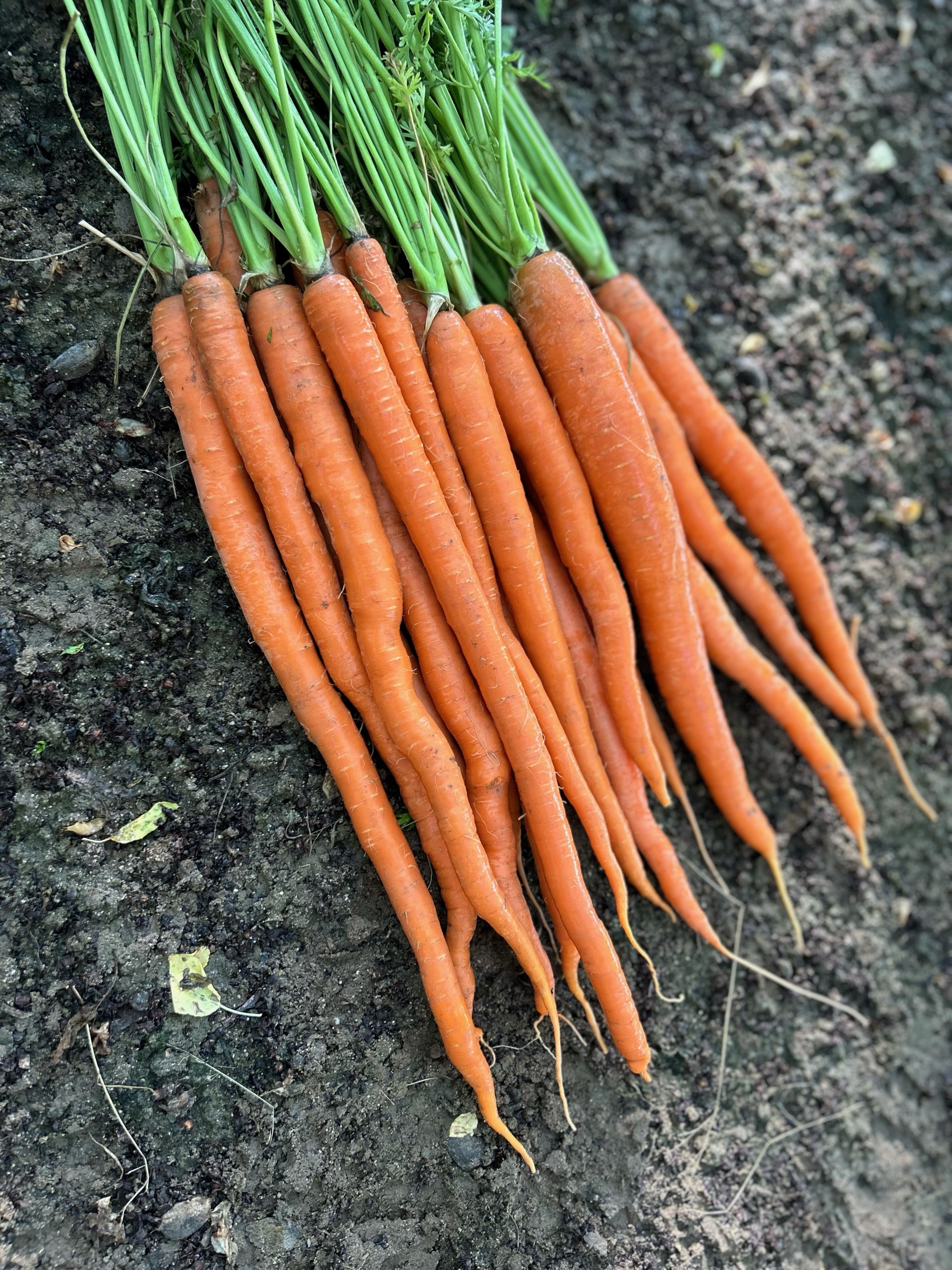
Why are carrots orange?
Crunching on a bright orange carrot, it’s hard to imagine them any other way. But surprisingly, the orange hue we know and love is a relatively recent development. It’s a testament to the fascinating interplay between science, agriculture, and our desire for visually appealing and nutritious food. The vibrant orange color of carrots is a result of both natural selection and human preference.
Consumers buy many things with their eyes first and flavor second. Often the better something looks, the better we think it will taste. This is why customers want bright red watermelons and tomatoes. Carrots are no different. For consumers throughout history, it was thought the darker the color, the better the carrot.
The orange hue of carrots is primarily attributed to a group of pigments called carotenoids, notably beta-carotene. Carotenoids are pigments that are naturally produced by plants. They play a vital role in photosynthesis which is the process by which plants capture sunlight to create energy.
Have you ever heard the saying that eating carrots is good for your eyes? This is because beta-carotene is a precursor to vitamin A, a vital nutrient essential for maintaining healthy vision, skin, and immune function.
In the 16th and 17th centuries, orange carrots start appearing in Europe, likely due to the crossbreeding of yellow and white varieties. This mutation, though seemingly a minor change, had a significant impact. Farmers, recognizing these benefits, began selectively planting the orange variants, leading to their dominance.
As different lines are crossed the dominant genes will reflect differently. This can affect a wide range of attributes that farmers may select for to provide the best product in the market. This often includes overall shape, size, length, and top for carrots. The color selection is not different. Selections are made based on the color of the new carrot varieties. Many times, what looks nice may not eat nice. Likewise, what may eat good may have poor shape. Marketable carrots are when you are able to combine color, shape, flavor, and length into one package.
So, the next time you bite into a crisp, juicy carrot, remember the long and colorful journey that led to this delightful root vegetable. Our carrot varieties can be found at seed dealers near you. View our carrot offerings here.
Citations
Graça, A. (2023, October 5). It Has Finally Been Discovered Why Carrots are Orange. Theweather.com | Meteored. https://www.theweather.com/news/science/it-has-finally-been-discovered-why-carrots-are-orange.html
Beta-carotene. (n.d.). Mount Sinai Health System. https://www.mountsinai.org/health-library/supplement/beta-carotene
Plackett, B. (2020b, September 5). Are carrots orange because of a Dutch revolutionary? livescience.com. https://www.livescience.com/why-are-carrots-orange.html#:~:text=These%20domesticated%20carrots%20were%20later,which%20farmers%20then%20selectively%20planted
Pascoe, R. (2016, May 12). New research debunks the link between orange carrots and Dutch royalty – DutchNews.nl. DutchNews.nl. https://www.dutchnews.nl/2016/05/90146-2/
Plant pigments. (2022, April 11). Let’s Talk Science. https://letstalkscience.ca/educational-resources/backgrounders/plant-pigments
Eberhardt, D. (2023, April 12). Are carrots man made? unearthing the carrots roots. Nature of Home. https://thenatureofhome.com/are-carrots-man-made/#:~:text=What%20was%20the%20original%20color,colors%2C%20including%20the%20iconic%20orange




